Face-Off: Forza Horizon 3
A preview of the Xbox One vs Scorpio comparisons to come?
Could this be our first look at how Xbox One titles will look on next year's Project Scorpio? Forza Horizon 3 represents a fascinating balance between looking good and running well on current generation console hardware while at the same time scaling up to provide an improved experience on high-end kit. Combined with the cross-platform nature of the new Play Anywhere system, what's clear is that Microsoft is laying the foundations for Scorpio's arrival right now - and it looks great.
It helps that the Forza Horizon engine is so solid to begin with, to the point where it looks so good at 1080p, you can't help but wonder whether we actually need a new wave of consoles at all. If there was one takeaway from this year's E3, it was that the first party wares from both Microsoft and Sony are punching seriously above their weight, compared to the outputs we've seen from equivalent PC kit.
Forza Horizon 3 builds upon the key technical successes of its predecessor and retains the superb image quality - 4x MSAA on a console title is virtually unheard of these days - while ramping up the environmental detail to new levels. It also goes without saying that the car modelling is exceptional, and though enhancements vary from vehicle to vehicle, the PC version does offer the ability to run more detailed in-game models, adding further to the spectacle.
The choice of Australia for the latest Horizon festival also pays dividends - the locales are varied, ranging from brush to cities to rainforests - and the quality of the materials and texture work is second to none, backed by a simply sublime lighting system. There are compromises, of course. Object detail pop-in is probably the biggest issue, and moving to PC doesn't address it so much as move the LODing artefacts further into the distance.
The comparisons between Xbox One and PC prove fascinating because for the most part, the enhancements are fairly subtle to pick up upon using our standard 1080p comparison gallery set-up. The best guess is that the console version operates at an equivalent level to the high setting on PC, and we strongly suspect that various settings are scaled dynamically during play in order to stabilise performance. LODs in particular vary substantially from scene to scene, especially noticeable on foliage detail, which often looks similar to the PC version operating at low or medium settings.
In terms of where the PC version improves matters, by and large, we're looking at the usual suspects: shadows exhibit more detail on the ultra setting, motion blur utilises more samples, anisotropic filtering rises up to 16x compared to what looks like 4x on Xbox One, while textures clearly resolve more detail. The world car level of detail setting adds significantly to some vehicles, as you'll see in the comparison gallery below, but it's mostly a massive drain on resources as it seems to utilise the full autovista models. Reflections also see further refinement on the PC side, though it's interesting to note that in bonnet-cam view, reflection detail is identical, even between PC quality settings - presumably because lower quality effects would look really rough when so much of the screen real estate is taken up with the effect.
Draw distance is also an area where the PC version excels - while the pop-in issue in the mid-distance only sees an iterative improvement, it's clear to see that detail in the far distance is significantly more pronounced. At standard 1080p though, it's not exactly a deal-breaker, and in many respects, the overall impression is one of additional refinement as opposed to a night and day improvement.





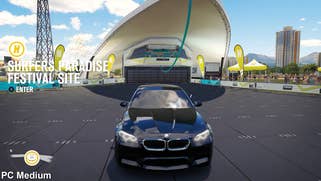
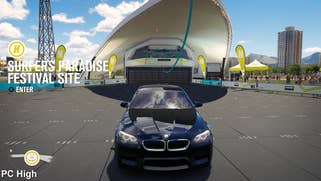

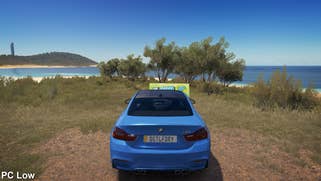
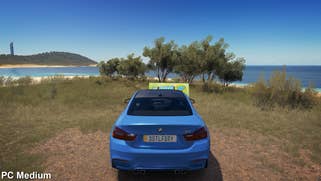
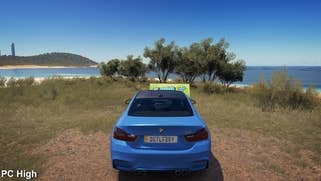
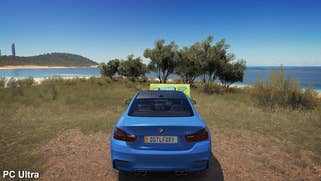
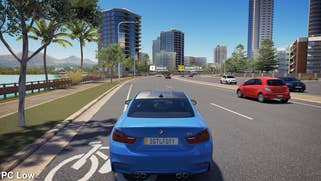
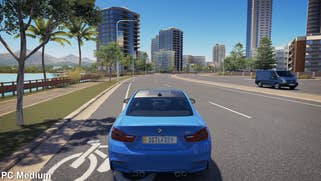
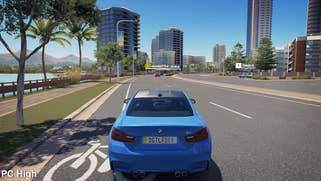
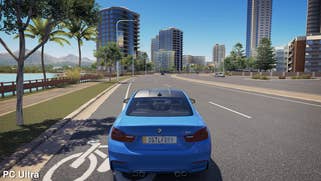


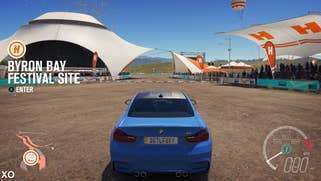
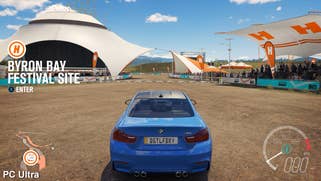
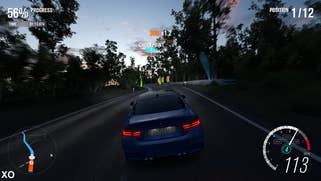
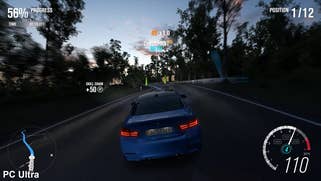
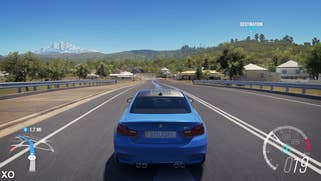

However, the situation changes dramatically once we move up to 4K and it's at this point that the enhancements all begin to fall in place, that we begin to realise why they are there. Forza Horizon 3 at high settings at ultra HD still looks good of course, but the additional levels of quality come across much more strongly as they fill the canvas offered by the higher resolution.
At base 1080p, Xbox One's low-level anisotropic filtering isn't really an issue but at 4K, with 16x AF in place on PC, the increase to road detail is revelatory. And it's also at this point that the enhanced texture work on offer via the ultra preset can actually be appreciated. The longer draw distances and less impactful LODing also ensures that the vast pixel count is put to good use. Perhaps of more importance right now to many PC users is the fact is that these enhancements also help significantly at 1440p resolution - but the higher we scale, the more apparent the improvements become.
Of course, the PC version's biggest issue is the fact that Playground's 30Hz iteration of the Forza engine really doesn't want to scale beyond 30fps, even on PC. We've documented the issues as they stand right now extensively, but the bottom line is that pushing beyond 30fps and hitting a solid 60 requires inordinately powerful hardware. A Titan X Pascal system can't sustain 1080p60 with 4x MSAA enabled - but it hits the target at 4K (!) with multi-sampling turned off. There are also scalability issues on mainstream GPUs too. While 30fps is the best choice for those with older Intel i5s and GTX 970-level hardware, you can push higher with adaptive sync displays and frame-rate limiters.
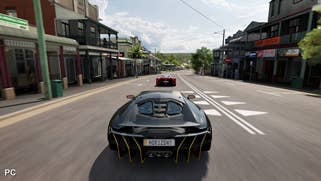
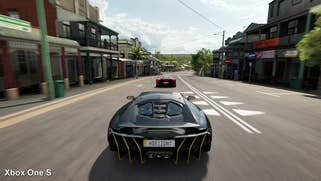
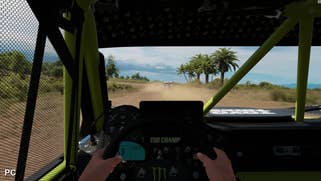
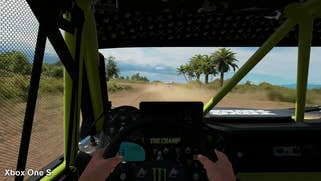
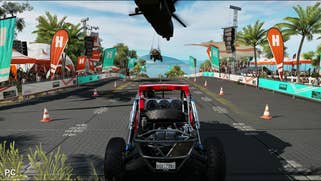
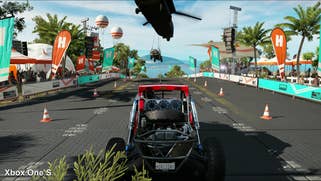
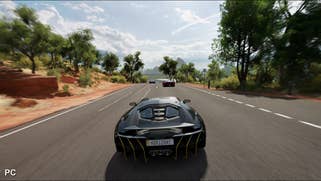
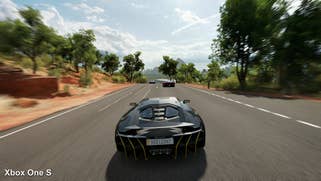


Otherwise though, it's 30fps that gives the best, most consistent experience and you don't need to nix MSAA. Indeed, the GTX 970 is perfectly happy to ramp up to 8x MSAA with the 30fps cap in place, and while we're on the subject, it's interesting to note that Forza Horizon 3 is one of the very, very few PC titles that actually frame-paces 30fps correctly - each update persisting for the required 33ms. The downside is that controls seem slightly muggier than the Xbox One version operating at the same frame-rate.
The console version's dynamic scalability ensures a mostly solid 30fps refresh with an acceptable degree of input latency. Obviously, the drop in performance results in less responsive controls overall compared to the 60Hz Forza Motorsport series entries, but there's never the sense that the driving experience is unduly compromised by the reduced frame-rate. It feels different, but the consistency ensures that you adjust, that you remain in control. Xbox One frame-rates remain mostly locked at 30fps, just like previous Horizon titles, but there are instances where frames do drop. However, they are few and far between.
At 30fps, the PC version also remains solid at high and ultra settings, even on lower-end Core i5 processors and mainstream PC hardware. However, the combination of detail-rich textures and MSAA could cause problems for users with 2GB cards. We noted that it was possible to hit 30fps with reasonable settings tweaks on a GTX 950 - however, the VRAM warning indicator was a nigh-on constant companion with 2x MSAA and high textures in effect. Similarly, top tier settings at 1440p causes similar problems for a 4GB GTX 970, where the GTX 1060 manages to cope just fine.
In conclusion, Xbox One offers a great experience out of the box, but to get the best from the PC version, you may need to accept that 30fps is the best you're going to get from the code as it stands right now. And that's a pity, because GTX 1060 and RX 480 should easily have the horsepower and the memory to run this game at 1080p60. Quite why they cannot is somewhat bizarre, and we can only hope that Playground Games is looking to improve performance.
Forza Horizon 3: the Digital Foundry verdict
A simply beautiful Xbox One experience, Forza Horizon 3 clearly needs work on PC, but the underlying work paints a fascinating picture of Microsoft's plans in maintaining 1080p support on Xbox One while striking out to support 4K displays. Firstly, there is the fundamental question of whether 4K is worthwhile, and we'd hope that the PC vs Xbox One S gallery above answers that question comprehensively.
A good-looking experience on Microsoft's existing hardware scales up beautifully to 4K, but it is interesting to note that getting the most out of ultra HD is about more than just the raw pixel count, it's about exploiting the real estate effectively: enhanced draw distances, improved textures and - yes - decent anisotropic texture filtering support. That's going to need bandwidth and RAM - which Scorpio has - but it's also going to require horsepower. We can't help but wonder whether six teraflops would actually be enough to support 4K resolution in addition to supporting the extra detail, but let's put this way - we can't wait to find out.











